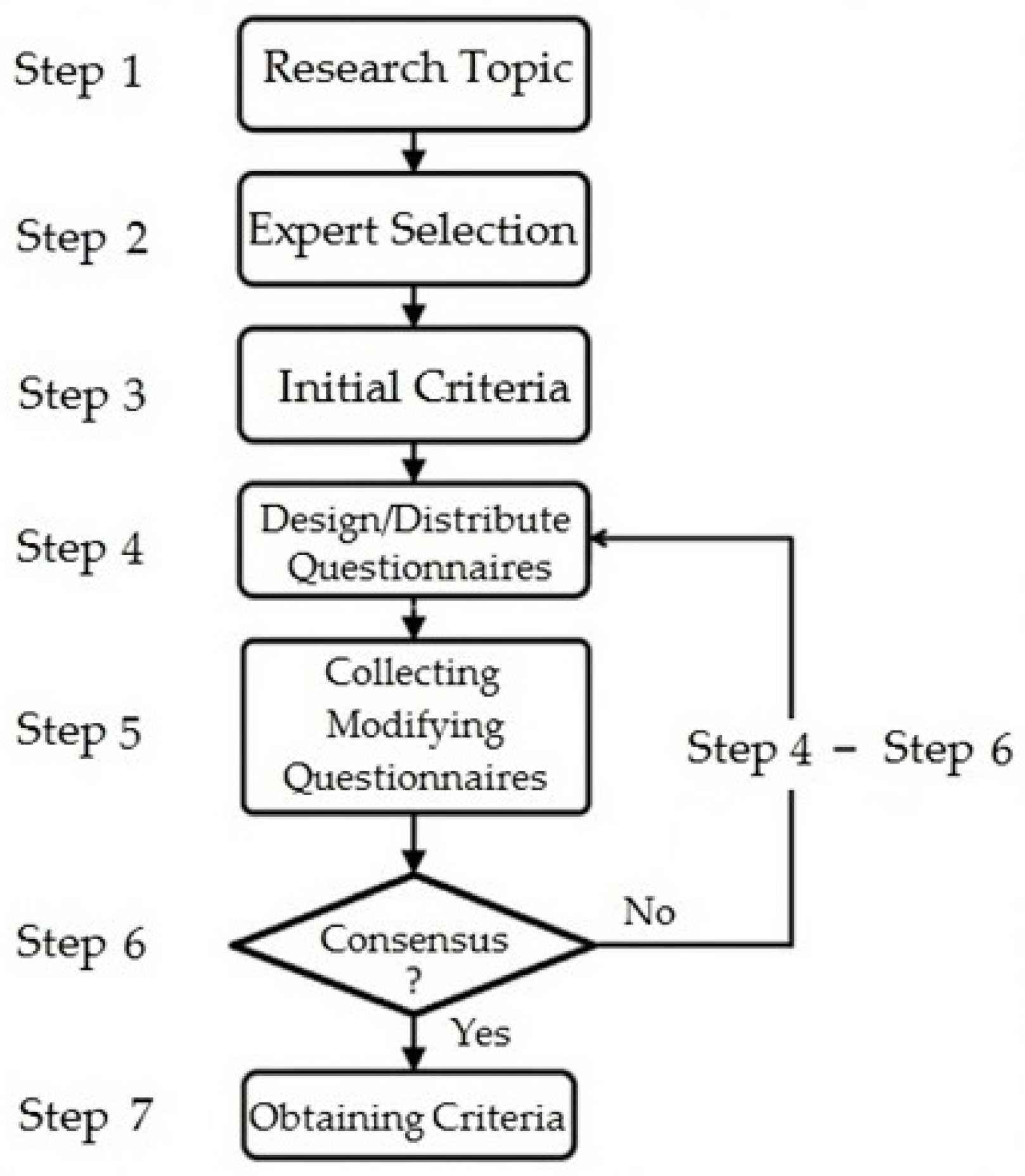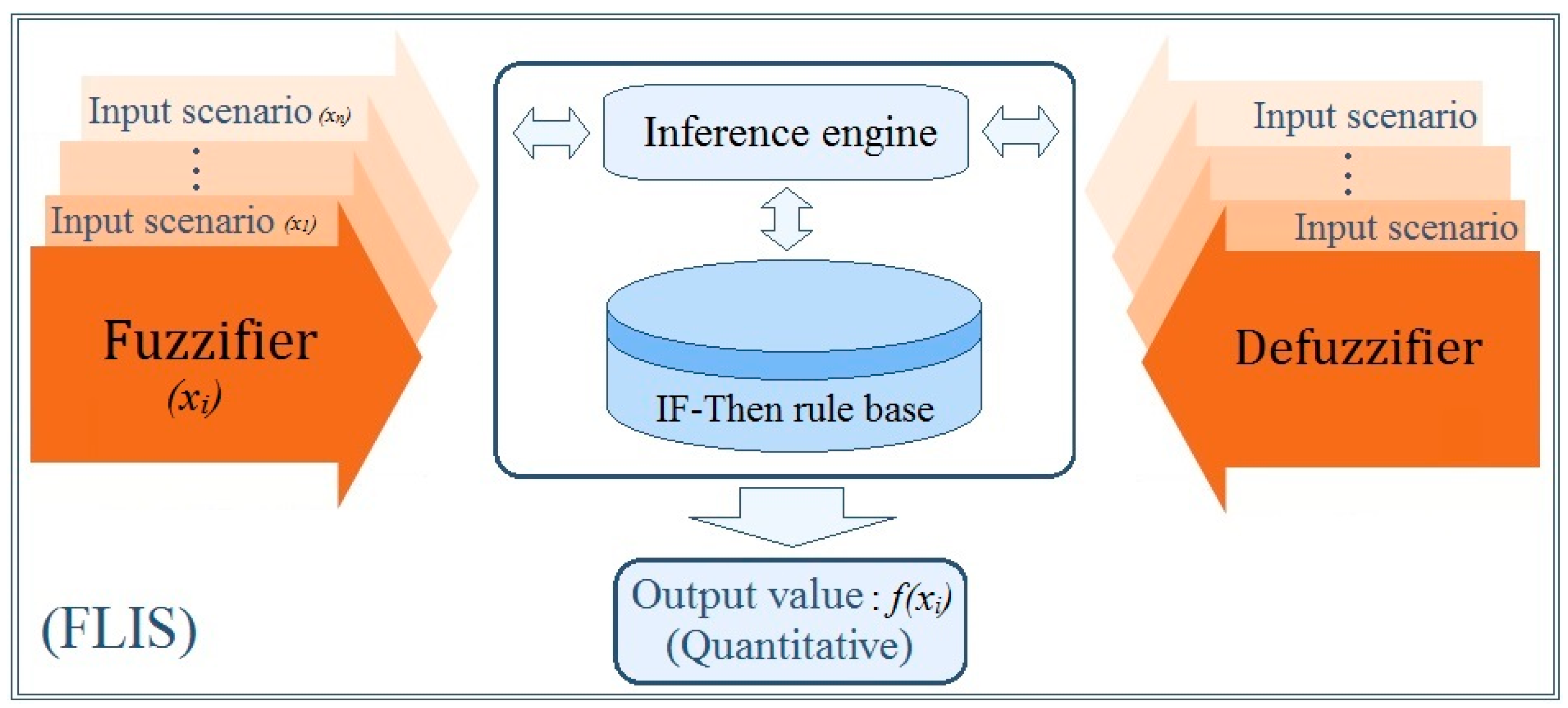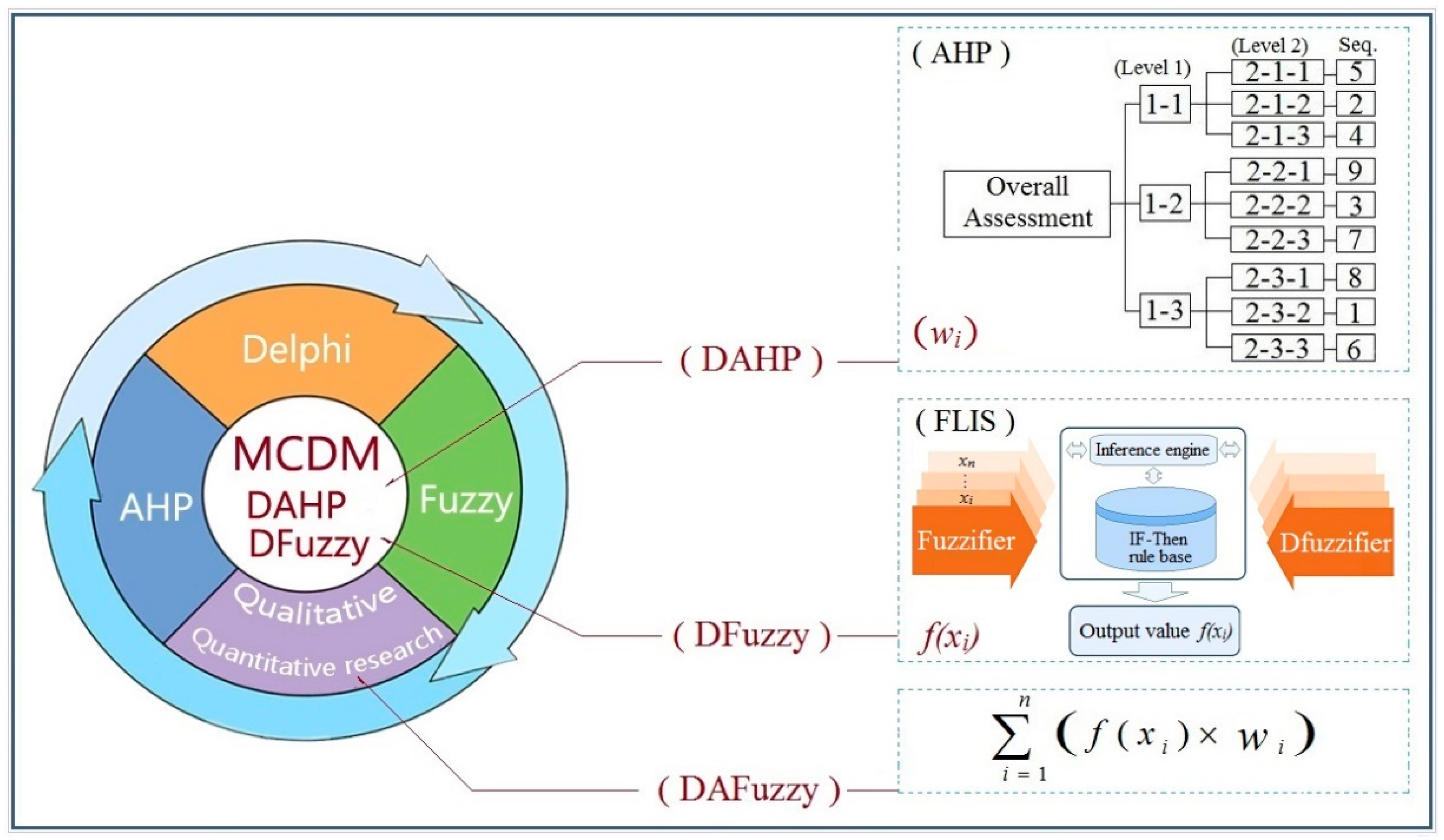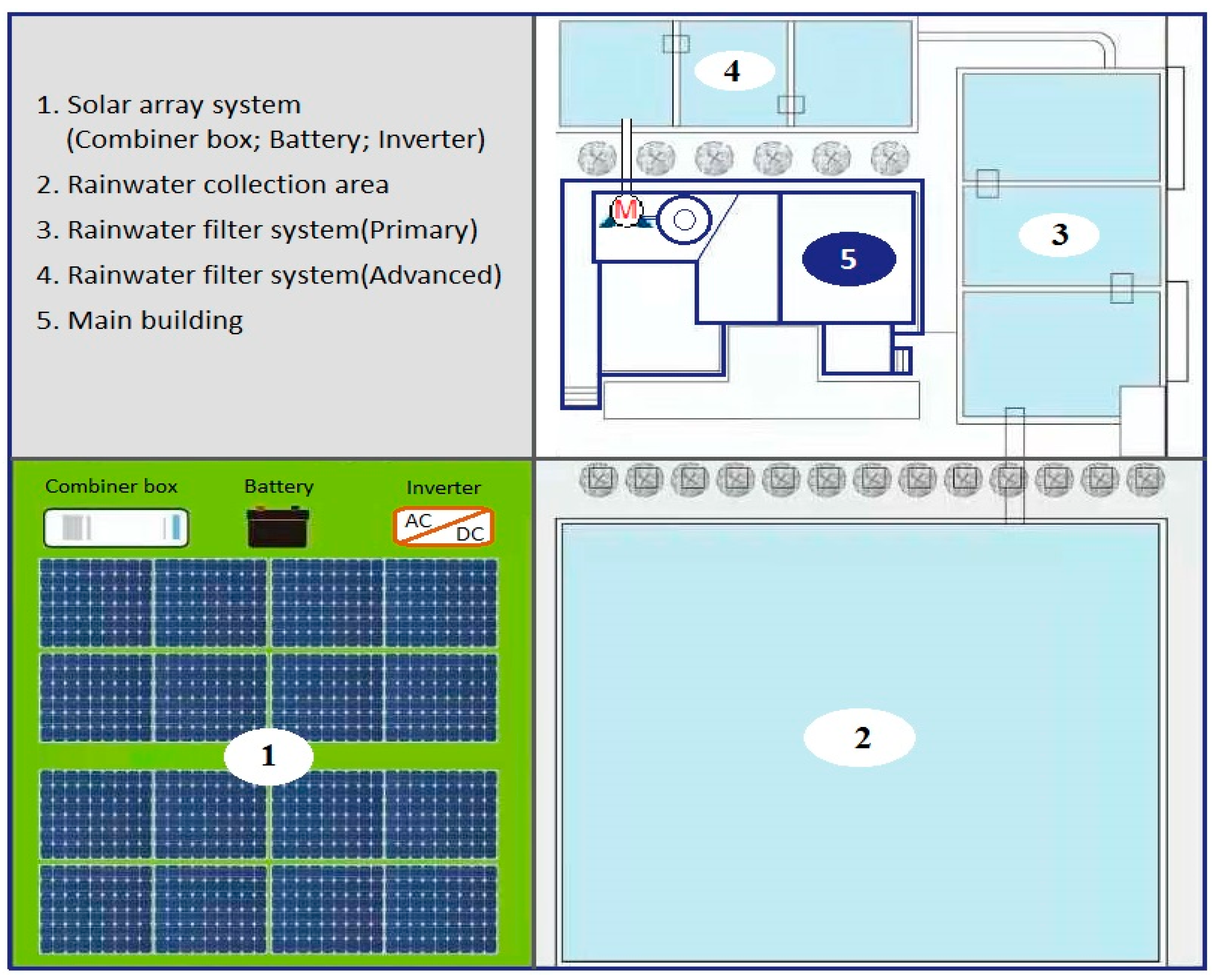Decision-Making Model Based on Discriminant Analysis Fuzzy Method for Low-Carbon and Eco-Friendly Residence Design: Case Study of Conghua District, Guangzhou, China
Abstract
:1. Introduction
2. Literature Review
- A household is responsible for energy consumption and is an important component of the community for implementing low-carbon living. Dependence between green and eco-friendly living brings about the best results. If industry and residents share the social responsibility toward green and eco-friendly living, the goal of sustainable development can be achieved. Eco-labels, green labels, and water-saving labels are commonly used in the construction industry in an effort towards sustainable development. The building or repairing of houses with the consideration of green and eco-friendly living contributes to the establishment of an eco-friendly community. The factors to be considered for the green residential building includes the following. [25] We defined the following factors after an extensive literature review for the design of the questionnaire using the Delphi method.
- For passive energy saving
- (1)
- Primary structure: insulated roof (thermal insulation), insulated exterior wall (thermal insulation), concrete floor (thermal dissipation), roof (shading),
- (2)
- Secondary structure: sunroof (lighting), a large number of windows (ventilation), low-E glass (thermal insulation), planation for shading, green roof (shading), ventilation design (5hermal dissipation & ventilation ball)
- (3)
- Equipment: rainwater storage system (water-saving), energy-saving light (power-saving), solar power panel, low VOCs’ coating
- For proactive energy saving, the following energy-saving equipment is required: ventilation timer for a shower, temperature and humidity sensor, geothermal heat pump, adjustable boiler, mechanical ventilation system, split air conditioner, solar power system, programmable temperature controller, and a photovoltaic sensing system.
3. Methods
3.1. Delphi Method
3.2. Analytical Hierarchy Process (AHP)
3.3. Fuzzy Logic Theory (FLT)
3.4. Combining AHP and FLT
4. Research Design
4.1. Delphi Method
- Green facilities: green building materials, photovoltaic power generation, energy-saving equipment
- Ecological facilities: green roof, planting/vegetation, rainwater collection/water recycling
- Community’s participation: subsidies, resident participation, appropriate norms
4.2. AHP
4.3. FLT
- Fuzzy set
- Membership function (MF)
- IF-THEN rule
- Fuzzy range
5. Delphi-AHP-FLT Model
6. Validation of the DAFuzzy Model
Overview of Houses
7. Discussions and Conclusions
Author Contributions
Funding
Informed Consent Statement
Conflicts of Interest
References
- Rahmstorf, S. Six Degrees: Our Future on a Hotter Planet. Nature 2007, 448, 136. [Google Scholar] [CrossRef]
- Bamberg, S. How does environmental concern influence specific environmentally related behaviors? A new answer to an old question. J. Environ. Psychol. 2003, 23, 21–32. [Google Scholar] [CrossRef]
- Neuvonen, A.; Kaskinen, T.; Leppänen, J.; Lähteenoja, S.; Mooka, R.; Ritola, M. Low-carbon futures and sustainable lifestyles: A backcasting scenario approach. Futures 2014, 58, 66–76. [Google Scholar] [CrossRef]
- Büchs, M.; Saunders, C.; Wallbridge, R.; Smith, G.; Bardsley, N. Identifying and explaining framing strategies of low carbon lifestyle movement organisations. Glob. Environ. Chang. 2015, 35, 307–315. [Google Scholar] [CrossRef] [Green Version]
- Zhang, X.; Wang, G.; Tan, Z.; Wang, Y.; Li, Q. Effects of ecological protection and restoration on phytoplankton diversity in impounded lakes along the eastern route of China’s South-to-North Water Diversion Project. Sci. Total Environ. 2021, 795, 148870. [Google Scholar] [CrossRef]
- Cao, Y.; Bian, Y. Improving the ecological environmental performance to achieve carbon neutrality: The application of DPSIR-Improved matter-element extension cloud model. J. Environ. Manag. 2021, 239, 112887. [Google Scholar] [CrossRef] [PubMed]
- Hsueh, S.L. Evaluation of Energy Efficient Residential Renovations Based on Natural Environmental Factors in Taiwan. In Advances in Environmental Research; Nova Science Publishers, Inc.: Hauppauge, NY, USA, 2016; Volume 50, Chapter 5; p. 113. ISBN 978-1-63485-477-1. [Google Scholar]
- Steg, L.; Dreijerink, L.; Abrahamse, W. Factors influencing the acceptability of energy policies: A test of VBN theory. J. Environ. Psychol. 2005, 25, 415–425. [Google Scholar] [CrossRef]
- Hsueh, S.-L.; Sun, Y.; Yan, M.-R. Conceptualization and Development of a DFuzzy Model for Low-Carbon Ecocities. Sustainability 2019, 11, 5833. [Google Scholar] [CrossRef] [Green Version]
- Hsueh, S.L.; Su, F.L. Discussion of environmental education based on the social and cultural characteristics of the community—An MCDM approach. Appl. Ecol. Environ. Res. 2017, 15, 183–196. [Google Scholar] [CrossRef]
- Hsueh, S.-L. Assessing the effectiveness of community-promoted environmental protection policy by using a Delphi-fuzzy method: A case study on solar power and plain afforestation in Taiwan. Renew. Sustain. Energy Rev. 2015, 49, 1286–1295. [Google Scholar] [CrossRef] [Green Version]
- Lubowiecki-Vikuk, A.; Dąbrowska, A.; Machnik, A. Responsible consumer and lifestyle: Sustainability insights. Sustain. Prod. Consum. 2020, 25, 91–101. [Google Scholar] [CrossRef] [PubMed]
- Cheng, X.; Long, R.; Chen, H. A policy utility dislocation model based on prospect theory: A case study of promoting policies with low-carbon lifestyle. Energy Policy 2020, 137, 111134. [Google Scholar] [CrossRef]
- Hsueh, S.-L.; Feng, Y.; Sun, Y.; Jia, R.; Yan, M.-R. Using AI-MCDM Model to Boost Sustainable Energy System Development: A Case Study on Solar Energy and Rainwater Collection in Guangdong Province. Sustainability 2021, 13, 12505. [Google Scholar] [CrossRef]
- Lin, Y.J.; Hsueh, S.L.; Chen, H.Y. A DEA-Based Performance Evaluation of Ecological Land Development of Cities. Ekoloji 2018, 106, 25–30. [Google Scholar]
- 14th Five-Year Plan of the Central Committee of the Communist Party of China in 2021. Available online: https://www.fujian.gov.cn/english/news/202108/t20210809_5665713.htm (accessed on 3 May 2022).
- Galiano, A.; Nocera, F.; Patania, F.; Moschella, A.; Detommaso, M.; Evola, G. Synergic effects of thermal mass and natural ventilation on the thermal behaviour of traditional massive buildings. Int. J. Sustain. Energy 2014, 35, 411–428. [Google Scholar] [CrossRef]
- Wu, L.; Yoonc, S.; Ye, K. Modeling contractors’ ecological protection efforts determination for expressway construction projects. Environ. Impact Assess. Rev. 2021, 91, 10669. [Google Scholar] [CrossRef]
- Burnside, W. Eco-labels and deforestation. Nat. Sustain. 2018, 1, 456. [Google Scholar] [CrossRef]
- Li, Q.; Shi, X.; Wu, Q. Exploring suitable topographical factor conditions for vegetation growth in Wanhuigou catchment on the Loess Plateau, China: A new perspective for ecological protection and restoration. Ecol. Eng. 2020, 158, 106053. [Google Scholar] [CrossRef]
- Shi, X.; Zhou, F.; Wang, Z. Research on optimization of ecological service function and planning control of land resources planning based on ecological protection and restoration. Environ. Technol. Innov. 2021, 24, 101904. [Google Scholar] [CrossRef]
- Akhanova, G.; Nadeem, A.; Kim, J.R.; Azhar, S.; Khalfan, M. Building Information Modeling Based Building Sustainability Assessment Framework for Kazakhstan. Buildings 2021, 11, 384. [Google Scholar] [CrossRef]
- Li, Q.; Shi, X.; Wu, Q. Effects of protection and restoration on reducing ecological vulnerability. Sci. Total Environ. 2021, 761, 143180. [Google Scholar] [CrossRef] [PubMed]
- Liu, K.S.; Liao, Y.F.; Hsueh, S.L. Implementing smart green building architecture to residential project based on Kaohsiung, Taiwa. Appl. Ecol. Environ. Res. 2017, 15, 159–171. [Google Scholar] [CrossRef]
- Liu, Y.; Suk, S. Constructing an Evaluation Index System for China’s Low-Carbon Tourism Region—An Example from the Daxinganling Region. Sustainability 2021, 13, 12026. [Google Scholar] [CrossRef]
- Głuszek, E. Use of the e-Delphi Method to Validate the Corporate Reputation Management Maturity Model (CR3M). Sustainability 2021, 13, 12019. [Google Scholar] [CrossRef]
- Olsen, A.A.; Wolcott, M.D.; Haines, S.T.; Janke, K.K.; McLaughlin, J.E. How to use the Delphi method to aid in decision making and build consensus in pharmacy education. Curr. Pharm. Teach. Learn. 2021, 13, 1376–1385. [Google Scholar] [CrossRef]
- Walters, D.; Kotze, D.C.; Rebelo, A.; Pretorius, L.; Job, N.; Lagesse, J.V.; Riddell, E.; Cowden, C. Validation of a rapid wetland ecosystem services assessment technique using the Delphi method. Ecol. Indic. 2021, 125, 107511. [Google Scholar] [CrossRef]
- Zielske, M.; Held, T. Application of agile methods in traditional logistics companies and logistics startups: Results from a German Delphi Study. J. Syst. Softw. 2021, 177, 110950. [Google Scholar] [CrossRef]
- Jiménez-Pulido, C.; Jiménez-Rivero, A.; García-Navarro, J. Sustainable management of the building stock: A Delphi study as a decision-support tool for improved inspections. Sustain. Cities Soc. 2020, 61, 102184. [Google Scholar] [CrossRef]
- Satty, T.L. The Analytic Hierarchy Process; McGraw-Hill Press: New York, NY, USA, 1980. [Google Scholar]
- Saaty, T.L.; Vargas, L.G. Prediction, Projection and Forecasting; Kluwer Academic Publishers: Dordrecht, The Netherlands, 1991; ISBN 978-94-015-7954-4. [Google Scholar]
- John, C.A.; Tan, L.S.; Tan, J.; Kiew, P.L.; Shariff, A.M.; Abdul Halim, H.N. Selection of Renewable Energy in Rural Area Via Life Cycle Assessment-Analytical Hierarchy Process (LCA-AHP): A Case Study of Tatau, Sarawak. Sustainability 2021, 13, 11880. [Google Scholar] [CrossRef]
- Felice, F.D.; Petrillo, A. Green Transition: The Frontier of the Digicircular Economy Evidenced from a Systematic Literature Review. Sustainability 2021, 13, 11068. [Google Scholar] [CrossRef]
- Andreolli, F.; Bragolusi, P.; D’Alpaos, C.; Faleschini, F.; Zanini, M.A. An AHP model for multiple-criteria prioritization of seismic retrofit solutions in gravity-designed industrial buildings. J. Build. Eng. 2021, 45, 103493. [Google Scholar] [CrossRef]
- Chen, Z.Y.; Dai, Z.H. Application of group decision-making AHP of confidence index and cloud model for rock slope stability evaluation. Comput. Geosci. 2021, 155, 104836. [Google Scholar] [CrossRef]
- Ding, D.; Wu, J.; Zhu, S.; Mu, Y.; Li, Y. Research on AHP-based fuzzy evaluation of urban green building planning. Environ. Chall. 2021, 5, 100305. [Google Scholar] [CrossRef]
- Biłozor, A.; Czyża, S.; Bajerowski, T. Identification and Location of a Transitional Zone between an Urban and a Rural Area Using Fuzzy Set Theory, CLC, and HRL Data. Sustainability 2019, 11, 7014. [Google Scholar] [CrossRef] [Green Version]
- Zhu, M.; Chen, D.; Wang, I.; Sun, Y. Analysis of oceanaut operating performance using an integrated Bayesian network aided by the fuzzy logic theory. Int. J. Ind. Ergon. 2021, 83, 103129. [Google Scholar] [CrossRef]
- Ouellet, V.; Mocq, J.; El Adlouni, S.-E.; Krause, S. Improve performance and robustness of knowledge-based FUZZY LOGIC habitat models. Environ. Model. Softw. 2021, 144, 105138. [Google Scholar] [CrossRef]
- Serrano-Guerrero, J.; Romero, F.P.; Olivas, J.A. Fuzzy logic applied to opinion mining: A review. Knowl.-Based Syst. 2021, 222, 107018. [Google Scholar] [CrossRef]
- Kraidi, L.; Shah, R.; Matipa, W.; Borthwick, F. Using stakeholders’ judgement and fuzzy logic theory to analyze the risk influencing factors in oil and gas pipeline projects: Case study in Iraq, Stage II. Int. J. Crit. Infrastruct. Prot. 2020, 28, 100337. [Google Scholar] [CrossRef]
- Guðlaugsson, B.; Fazeli, R.; Gunnarsdóttir, I.; Davidsdottir, B.; Stefansson, G. Classification of stakeholders of sustainable energy development in Iceland: Utilizing a power-interest matrix and fuzzy logic theory. Energy Sustain. Dev. 2020, 57, 168–188. [Google Scholar] [CrossRef]
- Kaya, İ.; Çolak, M.; Terzi, F. A comprehensive review of fuzzy multi criteria decision making methodologies for energy policy making. Energy Strateg. Rev. 2019, 24, 207–228. [Google Scholar] [CrossRef]
- Hsueh, S.L.; Zhou, B.; Chen, Y.L.; Yan, M.R. Supporting technology-enabled design education and practices by DFuzzy decision model: Applications of cultural and creative product design. Int. J. Technol. Des. Educ. 2021, 1–18. [Google Scholar] [CrossRef]
- Hsueh, S.L.; Sun, Y.; Gao, M.; Hu, X.; Meen, T.-H. Delphi and analytical hierarchy process fuzzy model for auxiliary decision-making for cross-field learning in landscape design. Sens. Mater. 2022, 34, 1707–1719. [Google Scholar] [CrossRef]







| Items | Delphi Method | Field Research Survey |
|---|---|---|
| Subjective | Experts in industry, academia, and government | No specification |
| Interview method | Experts do not know each other for anonymity | No specification |
| Basis for decision | Consistency | Descriptive statistics |
| Purpose | Qualitative analysis to obtain conclusions and knowledge | Qualitative analysis |
| Dimension | Green Facilities | Ecological Facilities | Community Participation |
|---|---|---|---|
| Green facilities | 1 | 2 | 0.89 |
| Ecological facilities | 0.5 | 1 | 1 |
| Community participation | 1.125 | 1 | 1 |
| Weight | 0.40 | 0.26 | 0.34 |
| Remark | CI = 0.0357, CR = 0.0615, RI = 0.58 | ||
| Pairwise Comparison | Green Building Materials | Photovoltaic Power Generation | Energy-Saving Equipment |
|---|---|---|---|
| Green building materials | 1 | 0.80 | 0.89 |
| Photovoltaic power generation | 1.25 | 1 | 1.2 |
| Energy-saving equipment | 1.125 | 0.83 | 1 |
| Weight | 0.30 | 0.38 | 0.32 |
| Remark | CI = 0.0002, CR = 0.0004, RI = 0.58 | ||
| Pairwise Comparison | Green Roof | Planting/Vegetation | Rainwater Collection/ Water Reuse |
|---|---|---|---|
| Green roof | 1 | 0.4 | 0.5 |
| Planting/vegetation | 2.5 | 1 | 2 |
| Rainwater collection/ Water recycling | 2 | 0.5 | 1 |
| Weighting value | 0.18 | 0.52 | 0.30 |
| Remark | CI = 0.0212, CR = 0.0123, RI = 0.58 | ||
| Pairwise Comparison | Subsidies | Resident Participation | Appropriate Norms |
|---|---|---|---|
| Subsidies | 1 | 0.33 | 0.6 |
| Resident participation | 3 | 1 | 1.2 |
| Appropriate norms | 1.67 | 0.83 | 1 |
| Weights | 0.19 | 0.47 | 0.35 |
| Remark | CI = 0.0122, CR = 0.0071, RI = 0.58 | ||
| Level 1 (wi−1) | Level 2 (wi−2) | wi | Ranking |
|---|---|---|---|
| Green facilities (1-1) (0.40) | Green building materials (2-1-1) (0.30) | 0.120 | 5 |
| Photovoltaic power generation (2-1-2) (0.38) | 0.152 | 2 | |
| Energy-saving equipment (2-1-3) (0.32) | 0.128 | 4 | |
| Ecological facilities (1-2) (0.26) | Green roof (2-2-1) (0.18) | 0.047 | 9 |
| Planting/vegetation (2-2-2) (0.52) | 0.135 | 3 | |
| Rainwater collection/water recycling (2-2-3) (0.30) | 0.078 | 7 | |
| Community participation (1-3) (0.34) | Subsidies (2-3-1) (0.19) | 0.065 | 8 |
| Resident participation (2-3-2) (0.47) | 0.160 | 1 | |
| Appropriate norms (2-3-3) (0.35) | 0.119 | 6 | |
| The total weight (wi) | 1.00 | ||
| Remark | wi = wi−1 × wi−2 | ||
| Dimension | Fuzzy Sets | Fuzzy Range | Output Value |
|---|---|---|---|
| Green facilities | Very Good | 0–100 | 0–100 Very good ≥ 85 84 ≥ Good ≥ 70 69 ≥ Average ≥ 55 54 ≥ Bad ≥ 40 Very bad ≤ 39 |
| Good | |||
| Average | |||
| Poor | |||
| Very Poor | |||
| Ecological facilities | Good | 0–100 | |
| Average | |||
| Poor | |||
| Community participation | Great | 0–100 | |
| Average | |||
| Bad |
| Dimension | Best Scenario | General Scenario | Worst Scenario |
|---|---|---|---|
| Green facilities | Very Good | Common | Very Poor |
| Ecological facilities | Very Good | Common | Poor |
| Community participation | Great | Common | Bad |
| Output value f(xi) | 89.8 | 57.5 | 18.7 |
 | |||
| Factor | wi | Best Scenario | General Scenario | Worst Scenario |
|---|---|---|---|---|
| f(xi) = 89.8 | f(xi) = 57.5 | f(xi) = 18.7 | ||
| wi × f(xi) | wi × f(xi) | wi × f(xi) | ||
| Green building materials | 0.120 | 10.776 | 6.900 | 2.244 |
| Photovoltaic power generation | 0.152 | 13.649 | 8.740 | 2.842 |
| Energy saving equipment | 0.128 | 11.494 | 7.360 | 2.393 |
| Green roof | 0.047 | 4.220 | 2.702 | 0.878 |
| Planting/vegetation | 0.135 | 12.123 | 7.762 | 2.524 |
| Rainwater collection/water recycling | 0.078 | 7.004 | 4.485 | 1.458 |
| Subsidies | 0.065 | 5.837 | 3.737 | 1.215 |
| Resident participation | 0.160 | 14.368 | 9.200 | 2.992 |
| Appropriate norms | 0.119 | 10.686 | 6.842 | 2.225 |
| Remark | Output value = ∑ (wi)× f(xi) | |||
| Dimension | Case 1 | Case 2 |
|---|---|---|
| Green facilities | 90 (very good) | 60 (general) |
| Ecological facilities | 85 | 70 |
| Community participation | 85 | 50 |
| Output value f(xi) | 80.2 | 62.6 |
 | ||
| Factor | wi | Case 1 | Case 2 |
|---|---|---|---|
| f(xi) = 80.2 | f(xi) = 62.6 | ||
| wi × f(xi) | wi × f(xi) | ||
| Green building materials | 0.120 | 9.624 | 7.512 |
| Photovoltaic power generation | 0.152 | 12.190 | 9.515 |
| Energy-saving equipment | 0.128 | 10.265 | 8.012 |
| Green roof | 0.047 | 3.769 | 2.942 |
| Planting/vegetation | 0.135 | 10.827 | 8.451 |
| Rainwater collection/water recycling | 0.078 | 6.255 | 4.882 |
| Subsidies | 0.065 | 5.213 | 4.069 |
| Resident participation | 0.160 | 12.832 | 10.016 |
| Appropriate norms | 0.119 | 9.534 | 7.449 |
| ∑ = wi × f(xi) | 80.509 | 62.848 | |
Publisher’s Note: MDPI stays neutral with regard to jurisdictional claims in published maps and institutional affiliations. |
© 2022 by the authors. Licensee MDPI, Basel, Switzerland. This article is an open access article distributed under the terms and conditions of the Creative Commons Attribution (CC BY) license (https://creativecommons.org/licenses/by/4.0/).
Share and Cite
Hsueh, S.-L.; Sun, Y.; Zhang, Y.; Xiao, N.; Meen, T.-H. Decision-Making Model Based on Discriminant Analysis Fuzzy Method for Low-Carbon and Eco-Friendly Residence Design: Case Study of Conghua District, Guangzhou, China. Buildings 2022, 12, 815. https://doi.org/10.3390/buildings12060815
Hsueh S-L, Sun Y, Zhang Y, Xiao N, Meen T-H. Decision-Making Model Based on Discriminant Analysis Fuzzy Method for Low-Carbon and Eco-Friendly Residence Design: Case Study of Conghua District, Guangzhou, China. Buildings. 2022; 12(6):815. https://doi.org/10.3390/buildings12060815
Chicago/Turabian StyleHsueh, Sung-Lin, Yue Sun, Yihang Zhang, Nan Xiao, and Teen-Hang Meen. 2022. "Decision-Making Model Based on Discriminant Analysis Fuzzy Method for Low-Carbon and Eco-Friendly Residence Design: Case Study of Conghua District, Guangzhou, China" Buildings 12, no. 6: 815. https://doi.org/10.3390/buildings12060815
APA StyleHsueh, S.-L., Sun, Y., Zhang, Y., Xiao, N., & Meen, T.-H. (2022). Decision-Making Model Based on Discriminant Analysis Fuzzy Method for Low-Carbon and Eco-Friendly Residence Design: Case Study of Conghua District, Guangzhou, China. Buildings, 12(6), 815. https://doi.org/10.3390/buildings12060815







